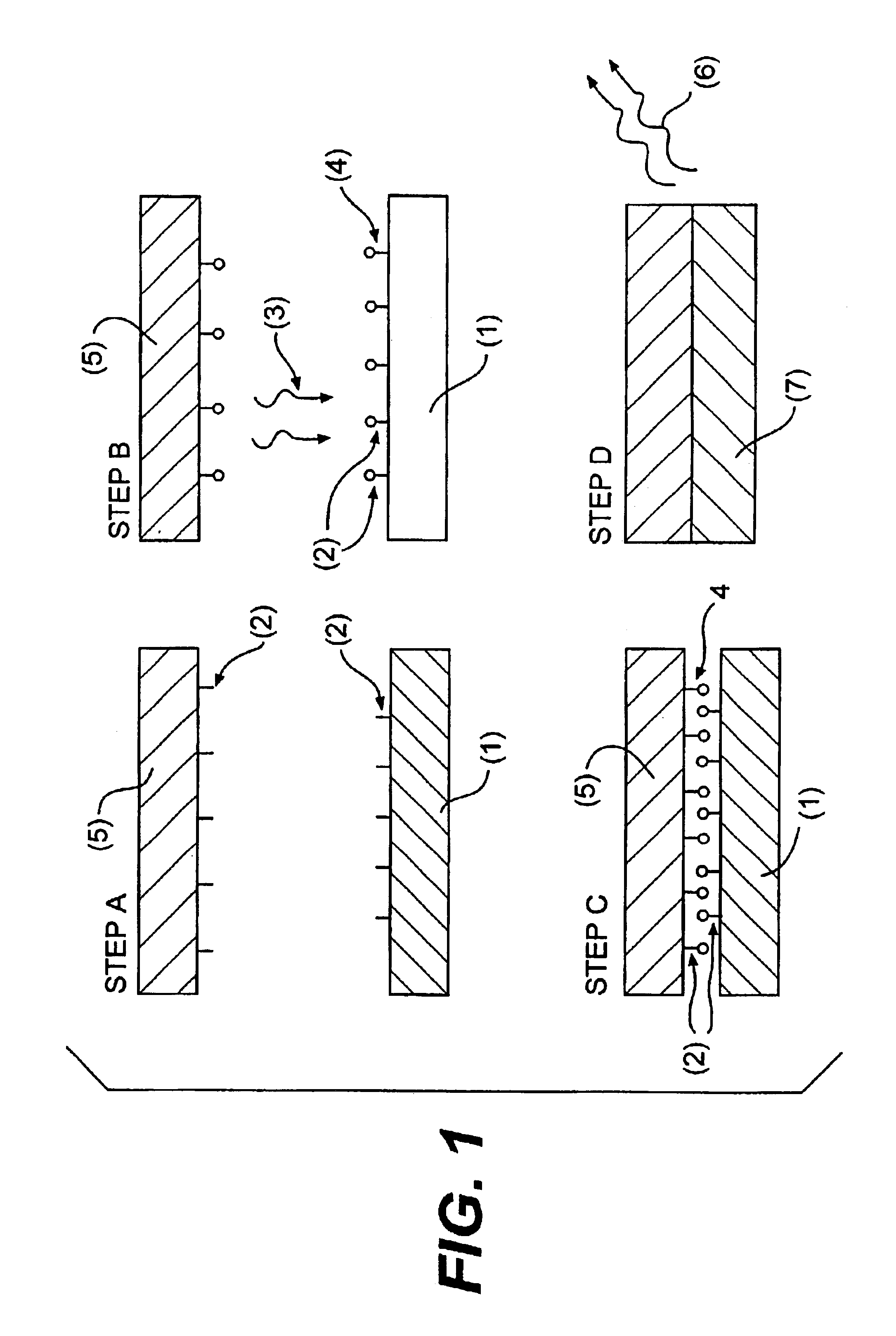Solder protective coating and fluxless joining of flip chip devices on laminates with plated solder
a technology of flip chip and protective coating, which is applied in the field of fluxless joining of flip chip devices on laminates with plated solder, can solve the problems of sn(iv) being difficult to complex, affecting the solder process, and easy to leave a clean surface easily wet, so as to facilitate the reflow of solder and facilitate the wetting of solder
- Summary
- Abstract
- Description
- Claims
- Application Information
AI Technical Summary
Benefits of technology
Problems solved by technology
Method used
Image
Examples
Embodiment Construction
[0015]Reference is made to the figures to illustrate selected embodiments and preferred modes of carrying out the invention. It is to be understood that the invention is not hereby limited to those aspects depicted in the figure.
[0016]In Step A, a first tin solderable surface 1 and a second tin solderable surface 5, each of the surfaces having a natural film of tin oxide 2 thereon, are provided. In Step B, a complexing agent 3 is applied. In some embodiments of the invention, the complexing agent is pimelic acid applied from a vapor phase. The complexing agent forms an addition product 4 with the oxide coating, in some embodiments, a cyclic tin pimelate product. In some embodiments of the invention, the parts, with solder joinable surfaces protected by the addition product, are stored for later final assembly. Step C intimately contacts the first and second surfaces. In Step D, reflow conditions are applied, forming a solder joint, decomposing the addition product to volatile materi...
PUM
| Property | Measurement | Unit |
|---|---|---|
| Temperature | aaaaa | aaaaa |
Abstract
Description
Claims
Application Information
 Login to View More
Login to View More - R&D
- Intellectual Property
- Life Sciences
- Materials
- Tech Scout
- Unparalleled Data Quality
- Higher Quality Content
- 60% Fewer Hallucinations
Browse by: Latest US Patents, China's latest patents, Technical Efficacy Thesaurus, Application Domain, Technology Topic, Popular Technical Reports.
© 2025 PatSnap. All rights reserved.Legal|Privacy policy|Modern Slavery Act Transparency Statement|Sitemap|About US| Contact US: help@patsnap.com


